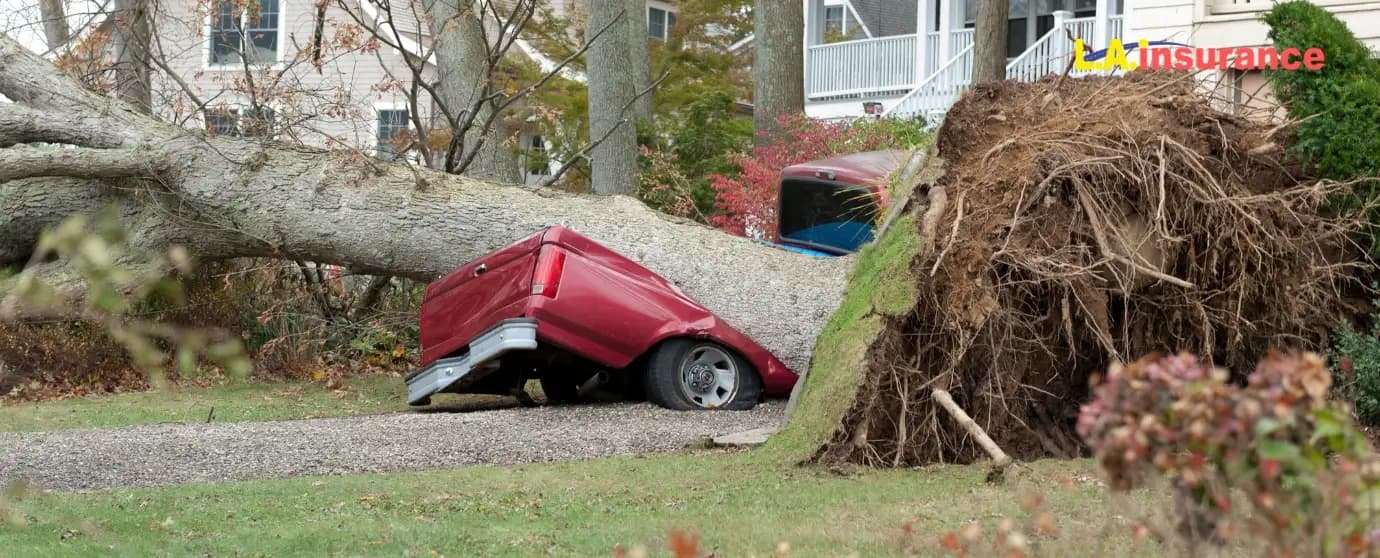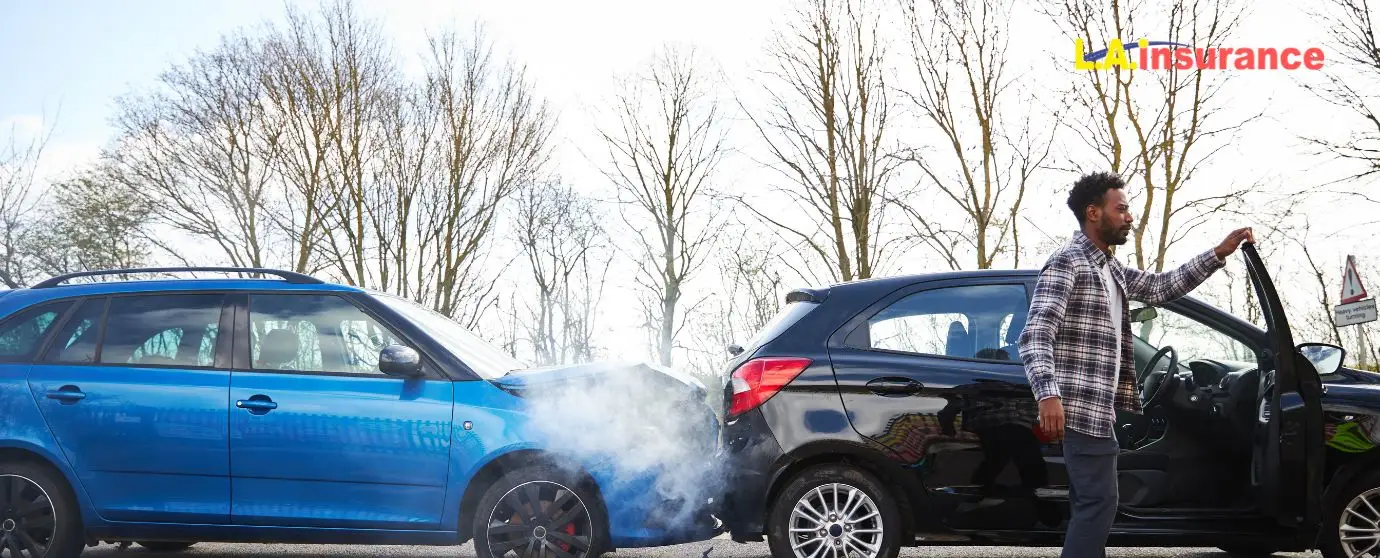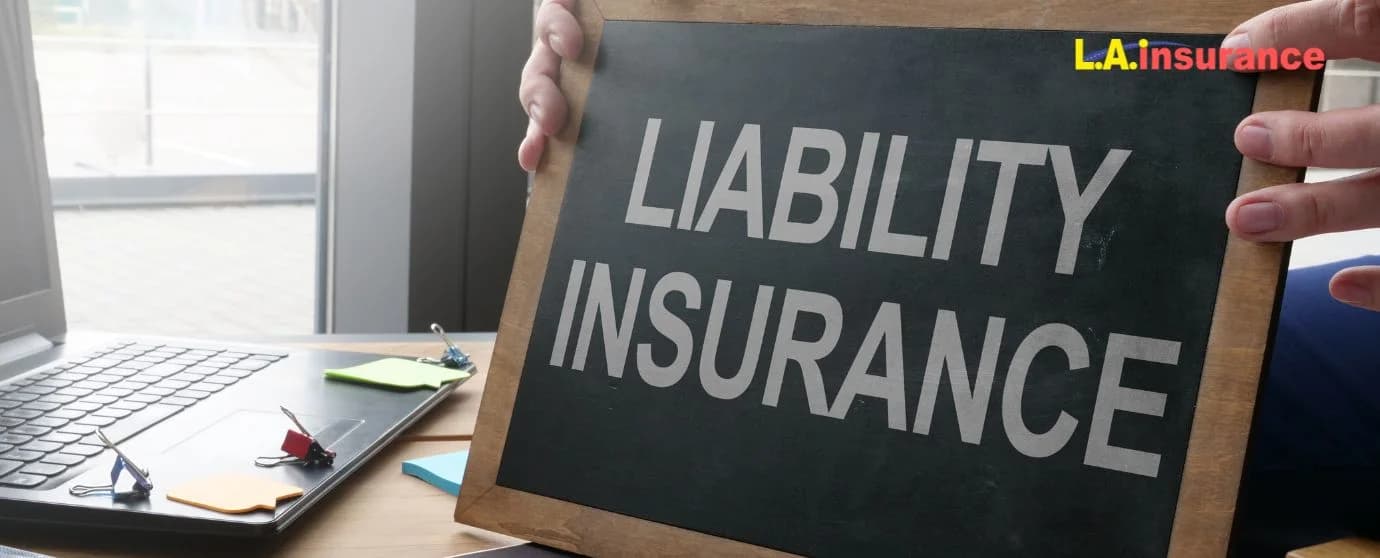
Publish Date: 07-09-2025
Auto Insurance
Last Updated: 17-12-2025
How Much Coverage Do I Need for Auto Insurance?
How much auto insurance do you need is a kind of question that doesn’t have a straightforward answer. Why is that? Because every driver is different, and not everyone has the same budget to afford full coverage car insurance with higher coverage limits.
Let’s say you’re a high-risk driver in Michigan or any other state with a history of accidents or DUI. In that case, we’d recommend getting collision coverage, which usually protects you from any collision-related events regardless of fault.
This coverage, though, isn’t mandatory like liability insurance unless the car you drive is financed or leased. You typically need it to receive financial support from the insurer if any accidents happen.
Besides, if you live in an area prone to weather risks (e.g., flood, storm), or there are risks of fire, theft, or vandalism, or where animal-related accidents (particularly deer collisions) are common, we’d also suggest getting comprehensive car insurance.
In short, apart from state-mandated liability insurance, it’s best to get these two types of car insurance for enhanced protection. And now the question is: how much coverage limit should you pick, how do you calculate it, what does your state require, what optional add-ons should be included, and what should the deductible be?
We’ll answer all these queries in our article in detail. So, keep reading to get the best insights before you decide to purchase auto insurance for yourself or for a family member.
How Much Car Insurance Do I Need?
Each state has minimum car insurance requirements. It’s called liability car insurance. You don’t just buy it for yourself. You buy to help others on the road, too. It protects both the at-fault and no-fault drivers by providing financial compensation for bodily injuries and property damage (e.g., vehicle damage, property damage).
In addition, it helps you with legal fees if you’re at fault and sued by another driver.
And this is mandatory coverage. But the coverage limit is set by state law, not federal law. That’s why you need to maintain it based on your state requirements. But the minimum coverage cap won’t protect in all cases.
For example, if you’re in Texas, you’ll need to follow the 30/60/25 rule. This is the minimum requirement. It means you need to carry $30,000 for bodily injury for one person, $60,000 total for bodily injury to two or more people per accident, and $25,000 for property damage per accident.
However, if an accident happens and you or the other driver suffers a spinal cord injury, this alone may cost you $100,000 in medical bills. So, what we mean to say here is that the minimum coverage isn’t always sufficient to protect you.
Insurance Information Institute (III), in one of its articles, recommends getting auto insurance coverage more than the minimum state requirements. Because they also believe the state minimum coverage isn’t always enough to cover serious accidents.
That’s why you need to be mindful while choosing the coverage limit for liability auto insurance. Your driving history, risks of accidents, driving areas with high accident rates, DUIs, or any traffic tickets, all can be factored in while setting this limit.
Besides, III also recommends getting higher liability limits or umbrella policies for added protection.
Forbes Advisor’s article on “how much car insurance do you need” also emphasizes the same thing. They mentioned that drivers should assess their personal needs and go beyond state requirements to ensure full protection.
In fact, experienced insurance writer Penny Gusner has recommended getting collision, comprehensive, uninsured/underinsured motorist coverage, MedPay, or PIP (Personal Injury Protection) insurance along with liability car insurance.
These coverages have also been recommended for drivers by NAIC. The National Association of Insurance Commissioners (NAIC) published a Consumer’s Guide to Auto Insurance, where they have stressed that you need to consider the 4 key things if you want to ensure sufficient coverage:
- Follow your state’s legal insurance requirements.
- If your car is financed or leased, meet your lender’s coverage requirements.
- Choose enough coverage to protect your assets in case of serious accidents and lawsuits.
- Choose a coverage limit considering your risk factors such as location, budget, driving history, and vehicle type.
Types of Auto Insurance Coverage You May Typically Need
Whether you're driving a car bought outright or a financed vehicle, you need to customize your insurance coverage based on your situation. Here are the recommended types of car insurance coverage:
Type of Car Insurance | What Does It Cover | Is It Required? |
Liability Insurance | Covers bodily injury and property damage you cause to others | Yes, required by law in most states |
Collision Insurance | Covers damage to your car from a collision, regardless of fault | Required if vehicle is financed/leased |
Comprehensive Insurance | Covers non-collision damage (e.g., theft, fire, weather, vandalism) | Often required if financed/leased |
Personal Injury Protection (PIP) | Covers your medical expenses regardless of fault | Required in some no-fault states (e.g., Michigan) |
Medical Payments Coverage | Pays medical bills for you and passengers after an accident regardless of fault | Optional |
Uninsured Motorist Coverage | Covers you if you're hit by a driver without insurance | Required in some states, otherwise optional |
Underinsured Motorist Coverage | Covers you if the other driver’s insurance isn't enough to pay for your damages | Optional |
Gap Insurance | Pays the difference between car’s value and the loan amount if totaled | Optional, recommended for financed vehicles |
Rental Reimbursement | Pays for a rental car while your vehicle is being repaired due to a covered loss | Optional |
Roadside Assistance | Helps with towing, flat tires, lockouts, and other breakdown services | Optional |
More>> Types of Car Insurance Coverage
How to Calculate How Much Car Insurance Coverage You Need?
A few important things should be considered when it comes to calculating how much coverage you need for auto insurance. These are:
- Location
- Car loan or lease status
- Vehicle age
- Car value
- Accident history or driving History
- Personal net worth
- Type of credit card
Location
Where you live plays a major role in determining how much car insurance coverage you need. Why? Because each state has different laws regarding minimum insurance requirements. In fact, auto insurance is mandatory in 49 out of 50 states. And if you drive without car insurance in these states, you could face serious consequences, including fines and even jail time.
And every state has different vehicle insurance requirements. For example, Michigan auto insurance requirements are different because it’s a no-fault state. It means you have to have Personal Injury Protection (PIP) in addition to liability insurance. There are 12 no-fault states where you need PIP.
Want to check your state's minimum coverage requirements? Keep reading. we’ll cover it shortly.
In the meantime, if you’re seeking an affordable insurance agency for reliable coverage with a hassle-free claim process, contact L.A. Insurance. We’re one of the largest independent insurance agencies in North America, serving consumers across various states, including Michigan, Colorado, Texas, Florida, Georgia, Arizona, and Nevada.
Car Loan or Lease Status
Do you have a loan on your car? If yes, it will impact how much coverage you need for car insurance. Because you have to satisfy your lender’s insurance requirements. Generally, financial institutions that provide an auto loan require drivers to carry the following insurance coverage (Combinedly called full coverage):
- Comprehensive insurance
- Collision insurance
- State minimum coverage.
Both these coverages actually help them protect their investment by covering any collision and non-collision related events, including accidents (regardless of fault), theft, fire, vandalism, animal collision, and natural disasters (e.g., storm, flood, earthquake, hail damage, hurricane, etc).
Apart from comprehensive and collision insurance, some lenders may also require a gap insurance add-on. Even if the lender doesn’t require it, it’s a “nice to have” coverage that pays for the outstanding loan balance if your car is totaled or stolen.
More>> Do You Need Full Coverage on a Financed Car?
Interesting Fact: More than 80% of new vehicles in 2024 in the United States were bought with financing, either through a loan or a lease, according to Statista.
Vehicle age
Is your vehicle new or an old one? If it’s a new one, you should consider a full coverage auto policy (Comprehensive and collision) for it. Because a new vehicle repair cost can be high. Besides, you might want to protect it from all sorts of risks that exist out there for a newer vehicle.
If your new vehicle is totaled or stolen, you’ll receive its actual cash value. Generally, a new car loses its value too fast, especially in its first few years of use. According to Kelly Blue Book (KBB), a new vehicle depreciates 30% over the first two years. Whether the car is financed or not, you don’t want to avoid protecting it during this time.
However, after a few years of use, when the value degrades too much, it may not be worth carrying extra coverage for it. This means for older vehicles with no remaining loan balance, you should drop collision coverage or comprehensive coverage and save money.
To protect your financed vehicle from a total loss or theft situation, you should also get gap insurance coverage along with comprehensive and collision insurance. According to the Insurance Information Institute, gap insurance is ideal for you if you:
- Made a down payment of less than 20%
- Financed the vehicle for 60 months or longer
- Leased the car (gap insurance is usually required)
- Bought a vehicle that depreciates faster than average
- Rolled over negative equity from a previous loan into the new one
More>> What Is Gap Insurance?
Car value
Car value also matters when it comes to determining how much coverage you need for auto insurance. If your car is newer or still worth a lot, you should carry full coverage car insurance. That means your car should be protected through both collision and comprehensive insurance, along with liability insurance. And that’s because replacing or repairing a high-value vehicle after an accident, theft, or vandalism can be expensive.
On the flip side, if your car is old and worth only a few thousand dollars, you might consider skipping full coverage. A good rule of thumb is that if your yearly premium for full coverage is more than 10% of your car’s value, it might not be worth it.
For example, if your car’s value is only $3,000. But your insurance company charges $1,000 a year for full coverage. In that case, you’re paying nearly half your car’s value just to keep it insured. So, you’d be better off sticking with liability coverage only and saving the extra cash.
Please keep in mind that insurance companies look at the actual cash value of your car, not what you paid for it. This value drops every year due to depreciation. The smart thing to do here is to check what your car is worth before deciding on your insurance policy. You can use tools like Kelley Blue Book or Edmunds to get an estimate. It’s quick and free.
Accident history or driving History
If your driving history is bad or you have a history of accidents, the basic liability coverage, which is 50/25/50, won’t be adequate. Your driving history tells the insurer a lot about your risk on the road. And past accidents, traffic collisions, or violations mean your insurer will view you as a high-risk driver. And they will charge you more than they charge a regular driver.
A single at-fault accident can lead to higher premiums and trigger coverage terms. And if you have had a DUI or multiple claims in the past few years, insurers may recommend or even require higher limits to offer you a car insurance policy at all.
On the other hand, if you have a clean driving record, you might qualify for discounts. You could also adjust your coverage based on your lower risk profile. Still, that doesn’t always mean you should go for the minimum. Accidents can happen to anyone.
More>> How Much Does Car Insurance Go Up After an Accident?
Personal Net Worth
Your personal net worth should guide how much liability insurance you carry. The more you own, the more you could lose in a lawsuit after a serious car accident. And how does this work?
If you cause an accident and your insurance policy doesn’t cover all the damage, the injured party can come after your assets. And they could file a lawsuit against you. This way, you might lose everything you have, your home, savings, or even future wages.
To avoid that, make sure your liability coverage matches or exceeds your net worth. It’s a simple way to protect what you’ve worked hard for.
Let’s demonstrate this with an example. Say your net worth is around $300,000. Now, carrying only the state minimum, which is typically 25/50/25, won’t cut it. If you cause an accident with major injuries and the claim hits $250,000, you’d be on the hook for anything your auto insurance doesn’t cover. In this case, the better fit would be 250/500/250 or adding umbrella insurance for extra safety.
Type of Credit Card
Your credit card can quietly influence how much car insurance coverage you really need. Some premium cards offer built-in perks like rental car coverage, roadside assistance, or even collision damage waivers.
And if your card includes these, you may not need to pay extra for the same coverage in your auto insurance policy. But keep in mind that these benefits are usually limited and come with conditions.
Let’s say your travel credit card covers rental car collision damage. So you might consider dropping rental reimbursement or collision coverage on a short-term rental and save a few dollars.
Still, we don’t recommend relying on your card alone for core protection such as liability insurance, personal injury protection, or uninsured motorist coverage.
Need affordable full coverage auto insurance for your high-value vehicle or financed vehicle? Contact L.A. Insurance today. We offer the most reliable insurance coverage with a super-smooth claim process. Call us at (800) 893-9393 or find an agent here.
Minimum Car Insurance Requirement by State
As has been said earlier, every state sets its own minimum auto insurance requirements. These typically include bodily injury liability, property damage liability limits. But minimum coverage isn’t the same everywhere.
Here's a table showing the minimum car insurance coverage limit each state requires, plus the recommended coverage limit:
State | Minimum Liability Coverage (Bodily Injury and Property Damage) | Recommended Coverage | Other Car Insurance Requirements by State |
Alabama | 25/50/25 | 100/300/100 | N/A |
Alaska | 50/100/25 | 100/300/100 | N/A |
Arizona | 25/50/15 | 100/300/100 | N/A |
Arkansas | 25/50/25 | 100/300/100 | N/A |
California | 30/60/15 | 100/300/100 | N/A |
Colorado | 25/50/15 | 100/300/100 | N/A |
Connecticut | 25/50/25 | 100/300/100 | Uninsured/underinsured motorist bodily injury: 25/50 |
Delaware | 25/50/10 | 100/300/100 | Personal injury protection: 15/30 |
Florida | 10/20/2010 | 100/300/100 | Personal injury protection: $10,000 |
Georgia | 25/50/25 | 100/300/100 | |
Hawaii | 20/40/10 | 100/300/100 | Personal injury protection: $10,000 |
Idaho | 25/50/15 | 100/300/100 | N/A |
Illinois | 25/50/20 | 100/300/100 | Uninsured motorist bodily injury: 25/50 |
Indiana | 25/50/25 | 100/300/100 | N/A |
Iowa | 20/40/15 | 100/300/100 | N/A |
Kansas | 25/50/25 | 100/300/100 | Personal injury protection: $4,500; |
Kentucky | 25/50/25 | 100/300/100 | Personal injury protection: $10,000 |
Louisiana | 15/30/25 | 100/300/100 | |
Maine | 50/100/25 | 100/300/100 | Medical payments: $2,000; |
Maryland | 30/60/15 | 100/300/100 | Personal injury protection: $2,500; |
Massachusetts | 20/40/5 | 100/300/100 | Personal injury protection: $8,000 |
Michigan | 50/100/10 | 100/300/100 | Personal injury protection: $250,000; Property protection insurance (PPI): $1 million |
Minnesota | 30/60/10 | 100/300/100 | Personal injury protection: $40,000; Uninsured/underinsured motorist bodily injury: 25/50 |
Mississippi | 25/50/25 | 100/300/100 | N/A |
Missouri | 25/50/25 | 100/300/100 | N/A |
Montana | 25/50/20 | 100/300/100 | N/A |
Nebraska | 25/50/25 | 100/300/100 | N/A |
Nevada | 25/50/20 | 100/300/100 | N/A |
New Hampshire | Not Required | 100/300/100 | Not required |
New Jersey | 25/50/25 | 100/300/100 | Personal injury protection: $15,000; Uninsured/underinsured motorist coverage 25/50/25 |
New Mexico | 25/50/10 | 100/300/100 | |
New York | 25/50/10 | 100/300/100 | Personal injury protection: $50,000 |
North Carolina | 30/60/25 | 100/300/100 | Uninsured/underinsured motorist coverage: 50/100/50 |
North Dakota | 25/50/25 | 100/300/100 | Personal injury protection: $30,000 |
Ohio | 25/50/25 | 100/300/100 | N/A |
Oklahoma | 25/50/25 | 100/300/100 | N/A |
Oregon | 25/50/20 | 100/300/100 | Personal injury protection: $15,000 |
Pennsylvania | 15/30/5 | 100/300/100 | Medical benefits: $5,000 |
Rhode Island | 25/50/25 | 100/300/100 | N/A |
South Carolina | 25/50/25 | 100/300/100 | N/A |
South Dakota | 25/50/25 | 100/300/100 | N/A |
Tennessee | 25/50/25 | 100/300/100 | N/A |
Texas | 30/60/25 | 100/300/100 | N/A |
Utah | 30/65/25 | 100/300/100 | Personal injury protection: $3,000 |
Vermont | 25/50/10 | 100/300/100 | Uninsured/underinsured motorist coverage: 50/100/10 |
Virginia | 50/100/25 | 100/300/100 | Uninsured/underinsured motorist coverage: 25/100/25 |
Washington | 25/50/10 | 100/300/100 | Uninsured/underinsured motorist coverage: 25/50/5 |
West Virginia | 25/50/25 | 100/300/100 | Uninsured/underinsured motorist coverage: 25/50/25 |
Wisconsin | 25/50/10 | 100/300/100 | Uninsured motorist bodily injury: 25/50 |
Wyoming | 25/50/20 | 100/300/100 | |
Which States Don’t Require Car Insurance?
Most states require auto insurance to legally drive. But a few give you other options.
For example, New Hampshire doesn’t mandate car insurance. Instead, drivers must prove they can cover damages after an accident. Virginia lets you drive without insurance if you pay a fee, but that doesn’t protect you financially.
States That Require PIP Coverage
15 states require you to carry personal injury protection (PIP) coverage. 12 of those states have a no-fault insurance law.
States include: Delaware, Florida, Hawaii, Kansas, Kentucky, Maryland, Massachusetts, Michigan, Minnesota, New Jersey, New York, North Dakota, Oregon, Pennsylvania, Utah.
If you’re in one of these states, you’ll need to maintain a minimum level of PIP coverage. It helps cover things like medical bills, lost wages, and essential services that are useful if you don’t have health insurance.
States That Require Additional Uninsured/Underinsured Motorist Coverage
Uninsured motorist (UM) coverage covers an accident the other driver has no insurance at all. 22 jurisdictions that require uninsured motorist coverage, including 21 states plus the District of Columbia.
States Include: Connecticut, Illinois, Kansas, Maine, Maryland, Massachusetts, Minnesota, Missouri, Nebraska, New Hampshire, New Jersey, New York, North Carolina, North Dakota, Oregon, South Carolina, South Dakota, Vermont, Virginia, West Virginia, Wisconsin.
And 14 states require underinsured motorist (UIM) coverage, which helps protect you if you're in an accident with a driver whose liability insurance is insufficient. States Include: Connecticut, Maine, Maryland, Massachusetts, Minnesota, Nebraska, New Jersey, North Carolina, North Dakota, Oregon, South Dakota, Vermont, Virginia, Wisconsin.
How Much Car Liability, PIP, and Medical Payments Coverage Should You Buy?
Liability insurance covers injuries and property damage you cause to others. It’s required in most states. The minimum may be 25/50/25, but experts recommend 100/300/100 to protect your assets.
Example: You cause a crash, injuring two people. Medical costs reach $240,000. If you only have 25/50/25, you’ll pay out of pocket.
Personal Injury Protection (PIP) covers your medical bills, lost wages, and essential services after an accident, no matter who’s at fault. Required in no-fault states. A safe amount is $10,000 to $25,000
Example: You break your leg in a crash. PIP helps with hospital bills and lost income while you're off work.
Medical Payments Coverage (MedPay) also covers medical costs for you and your passengers. It’s optional and works well if you don’t have PIP. Consider $2,000 to $10,000.
Example: A passenger needs X-rays. MedPay handles it, even if you caused the crash.
Do I Need Full Coverage (Comprehensive & Collision) Car Insurance?
There are three scenarios when you should consider full coverage car insurance:
- If your vehicle is financed/leased
- If your vehicle is expensive
- If you’re a high-risk driver living in an area prone to natural disasters or theft
As we said, financial institutions/lenders usually require full coverage insurance unless you have fully paid off the loan.
And even if your car isn’t financed, you should consider getting full coverage if your vehicle is expensive. Because high-value cars cost more to replace or repair. If you have full coverage, you don’t have to pay for it out of pocket.
In addition, you should get full coverage if you’re a high-risk driver (history of accidents, DUI, or tickets) or if you live in an area where frequent theft, flooding, or storms occur.
More>> What Is Full Coverage Car Insurance?
What Add-On Coverage Should You Consider?
Optional add-ons are great for additional protection and emergencies. And if you frequently travel longer distances, you should also consider a few add-on options to protect your vehicle along with liability coverage or full coverage. These are:
- Roadside Assistance: Helps with flat tires, dead batteries, towing, or lockouts. It’s great for older vehicles or long commutes.
- Rental Car Reimbursement: Covers the cost of a rental while your car is being repaired after an accident. Usually limited to a daily amount, like $30-$50.
- Gap Insurance: If your car is leased or financed, this covers the difference between what you owe and what it’s worth if it’s totaled.
- Rideshare Coverage: Needed if you drive for companies like Uber or Lyft. Fill the gaps between your personal policy and the rideshare company’s coverage.
- OEM Coverage: Pays for original manufacturer parts instead of cheaper aftermarket ones after a repair.
These add-ons are usually low-cost and worth considering if they fit your driving lifestyle or car ownership situation.
What’s the Recommended Auto Insurance Deductible Amount?
Most drivers choose a deductible between $500 and $1,000. A higher deductible lowers your car insurance premiums. However, you’ll pay more out of pocket if there’s an accident or claim. If you have savings to cover a $1,000 repair, go higher. If not, stick with $500. You should choose what fits your budget and risk tolerance, not just what saves you a few bucks per month.
How Much Car Insurance Do I Need: The Key Takeaways
- Choose liability coverage that matches or exceeds your net worth to protect your assets.
- Go beyond state minimum, which often falls short in real-life accident costs.
- Our recommended minimum coverage limit is 100/300/100.
- Add PIP or MedPay based on your health coverage and state requirements.
- If your car is new, valuable, or financed, consider full coverage with collision and comprehensive.
- Choose a higher deductible only if you can afford to pay.
- Consider add-ons like roadside assistance for emergency cases.
Tag :
Auto insurance








